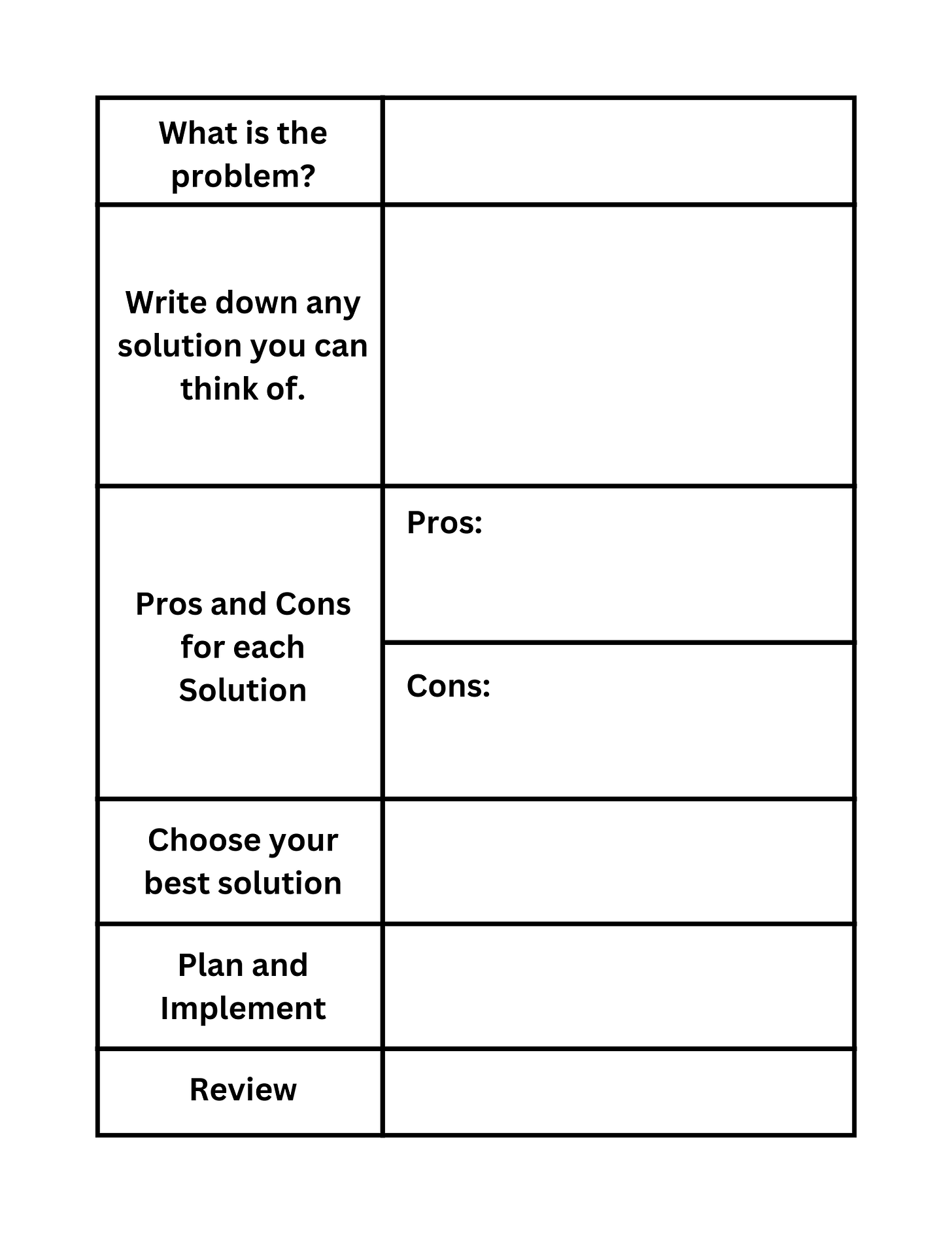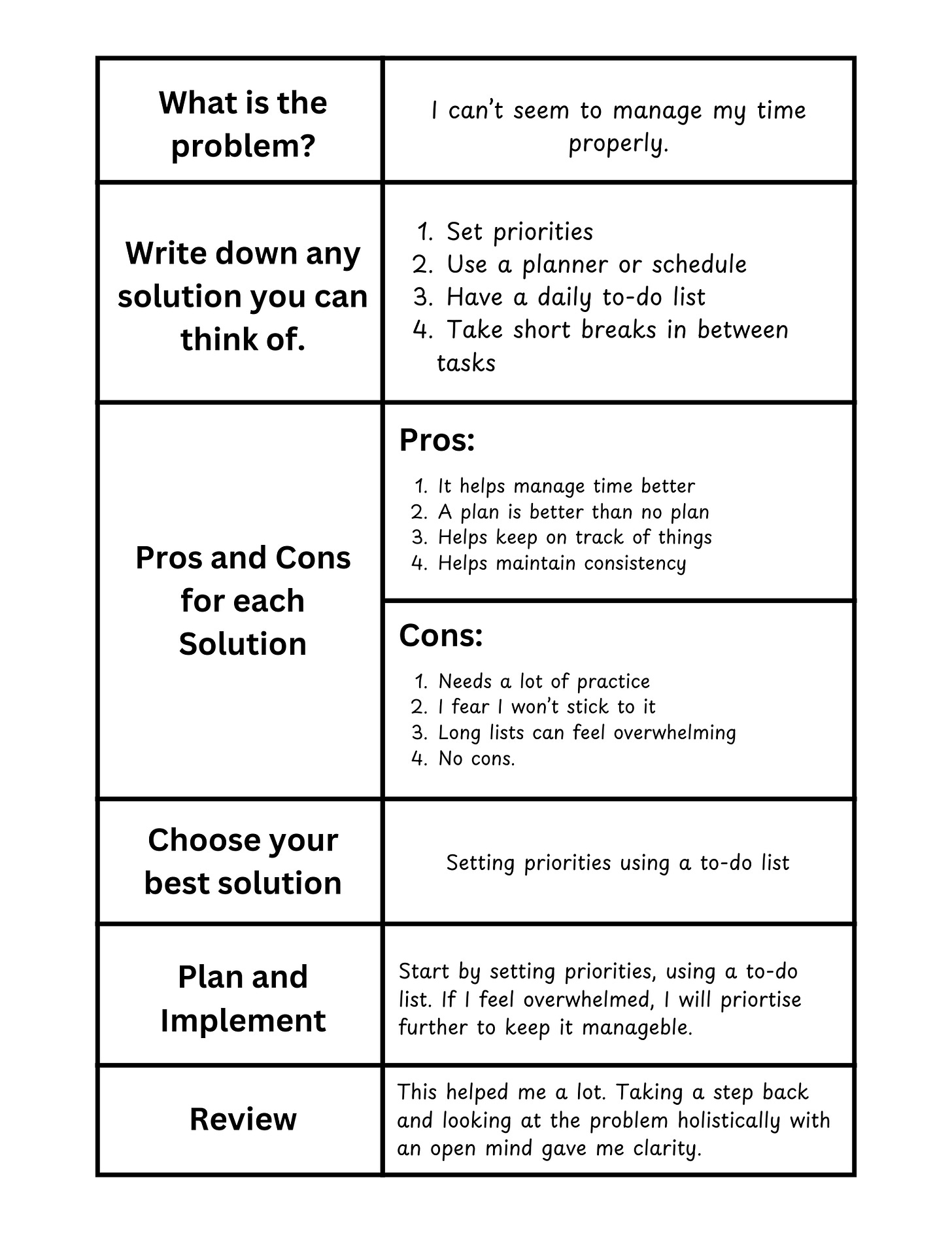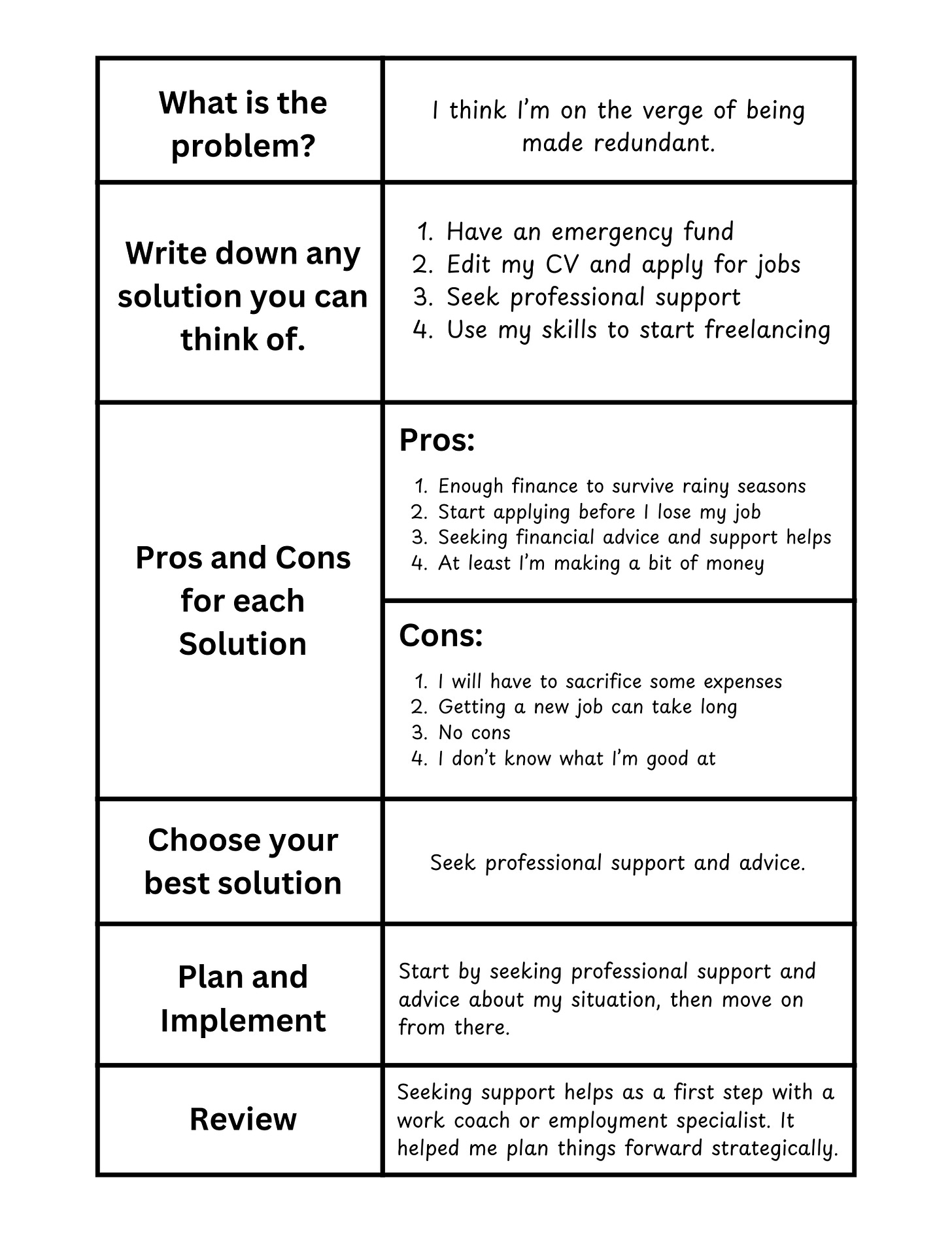Week 3 - The Power of Problem-solving
Learning to solve practical every day problems and boost self-confidence
Hi everyone!
Welcome to another blog post on Moving Forward. This week, we will delve into overcoming depression in winter using an effective intervention called Problem-solving. Our focus will be mainly on depression as I will cover problem-solving worries in the worry management blog post in the coming weeks.
Problem-solving is a highly needed skill that can applied to many areas of our lives (personal, social, and work). Our problem-solving skills become impaired when we experience depression and anxiety. This is one of the main reasons we struggle to see light at the end of the tunnel. If you hope to learn how to solve your problems or find a way out of the problems or issues that you’re enduring, then keep reading.
What is Problem-solving?
Its a therapy or intervention that helps people experiencing common mental health problems (such as anxiety, depression, and stress). Problem-solving can be used as a stand-alone intervention or as an added self-help guided tool in psychological therapy. You can read more about problem-solving as a short-term therapy on the VeryWellMind website.
It can be comprised of seven steps (eight steps for anxiety/worry):
Identifying the problem
Identifying possible solutions (Anything you can think of despite how trivial it may sound. Write it down)
Weigh the pros and cons of each solution
Choose the best solution
Make a plan (What are you going to do?)
Implement your plan (Give it a go!)
Review (How did it go?)
Below I will explain each step following a template with two practical examples.
Step 1: Identify the problem
It’s difficult to think about solving problems when you’re feeling low, stressed, depressed, anxious, worried, and overthinking. Our brains are clouded by thoughts and images about the past and future. In this step, we learn to identify the problem (What exactly is it?). If we’re struggling to think of an answer, we could try writing down each problem we’re facing and select the one we want to solve now.
Step 2: Write down as many solutions you can think of
This second step is to jot down all the possible solutions we can think of regardless of how trivial they may sound. We don’t necessarily have to come up with many solutions, even two or three can be a good start.
Step 3: Weigh the pros and cons of each solution
After having written down solutions, we then weigh the pros and cons of each one. When we’re able to look at the pros and cons, we can then identify which one is the best solutions to select.
Step 4: Choose the best solution
Choose the one you think works best after weighing the pros and cons. Sometimes, your solutions may look like steps to solving a problem. Start with the best option and give it a go.
Step 5: Make a plan
Plan your solution by breaking it down further to make the trail easy to follow and the target easy to achieve (solving the problem).
Step 6: Implement your plan
In short, give it a go and see what happens. Remember to note down your experiencs.
Step 7: Review
How did it go?
Did it work?
Did it not work?
What did you learn from it?
What would you do differently?
Do you need to select another solution?
Reviewing helps understand what happened and whether it helped or not and reflect on what you could do differently to improve your situation and solve the problem. Try journaling or having a weekly diary.
Template and Examples (see below)
Staying Well Plan
As a staying well plan, consider the three following questions:
What techniques have I learned from behavioural activation that I found beneficial?
Are there any new goals I would like to set?
What can I do to maintain my progress?
These questions can help you move forward to staying well.
Yours truly,
Hashil
Quote of the Week
“We can not solve our problems with the same level of thinking that created them.”
-Albert Einstein
What’s Coming Next
In the coming week, I aim to write about overcoming rumination using a technique from CBT (Cognitive Behavioural Therapy) and ACT (Acceptance and Commitment Therapy). This will teach us to be more present and not get stuck in the past for too long.
Your comments are always appreciated. I hope these blog posts have been beneficial to you.
PS: Don’t forget to subscribe to stay up-to-date and learn more.
PS: Don’t hesitate to send me a message.
References
Yen, Y. C., Rebok, G. W., Gallo, J. J., Jones, R. N., & Tennstedt, S. L. (2011). Depressive symptoms impair everyday problem-solving ability through cognitive abilities in late life. The American journal of geriatric psychiatry : official journal of the American Association for Geriatric Psychiatry, 19(2), 142–150. https://doi.org/10.1097/JGP.0b013e3181e89894
Llera, S. J., & Newman, M. G. (2020). Worry impairs the problem-solving process: Results from an experimental study. Behaviour research and therapy, 135, 103759. https://doi.org/10.1016/j.brat.2020.103759
Krause, K. (2020, December 2). Problem solving therapy for depression #ActiveIngredientsMH. National Elf Service. https://www.nationalelfservice.net/treatment/psychotherapy/problem-solving-therapy-depression-activeingredientsmh/
NHS inform. (2024, July 3). Problem solving self-help guide | NHS inform. NHS Inform. https://www.nhsinform.scot/illnesses-and-conditions/mental-health/mental-health-self-help-guides/problem-solving-self-help-guide/
Cuncic, A., MA. (2024, February 7). What is Problem-Solving therapy? Verywell Mind. https://www.verywellmind.com/an-overview-of-problem-solving-therapy-4767991





